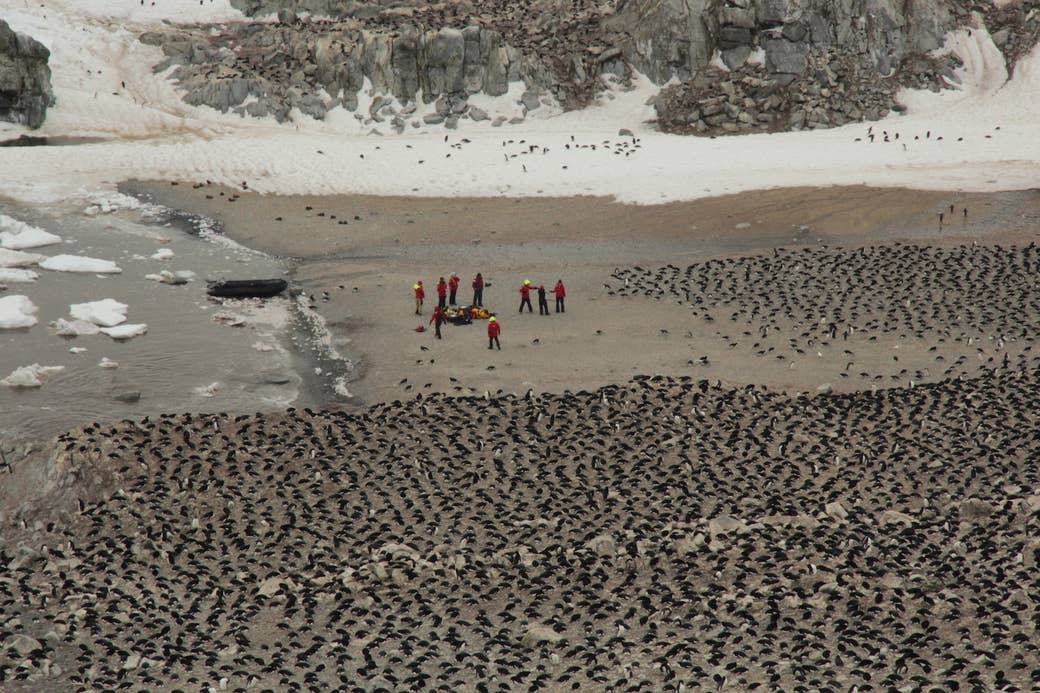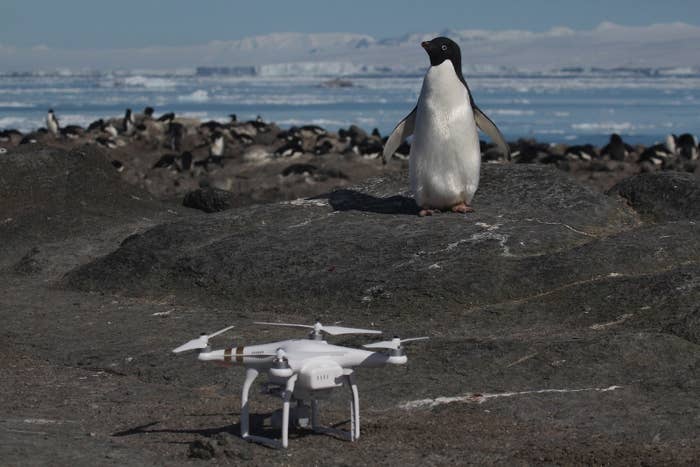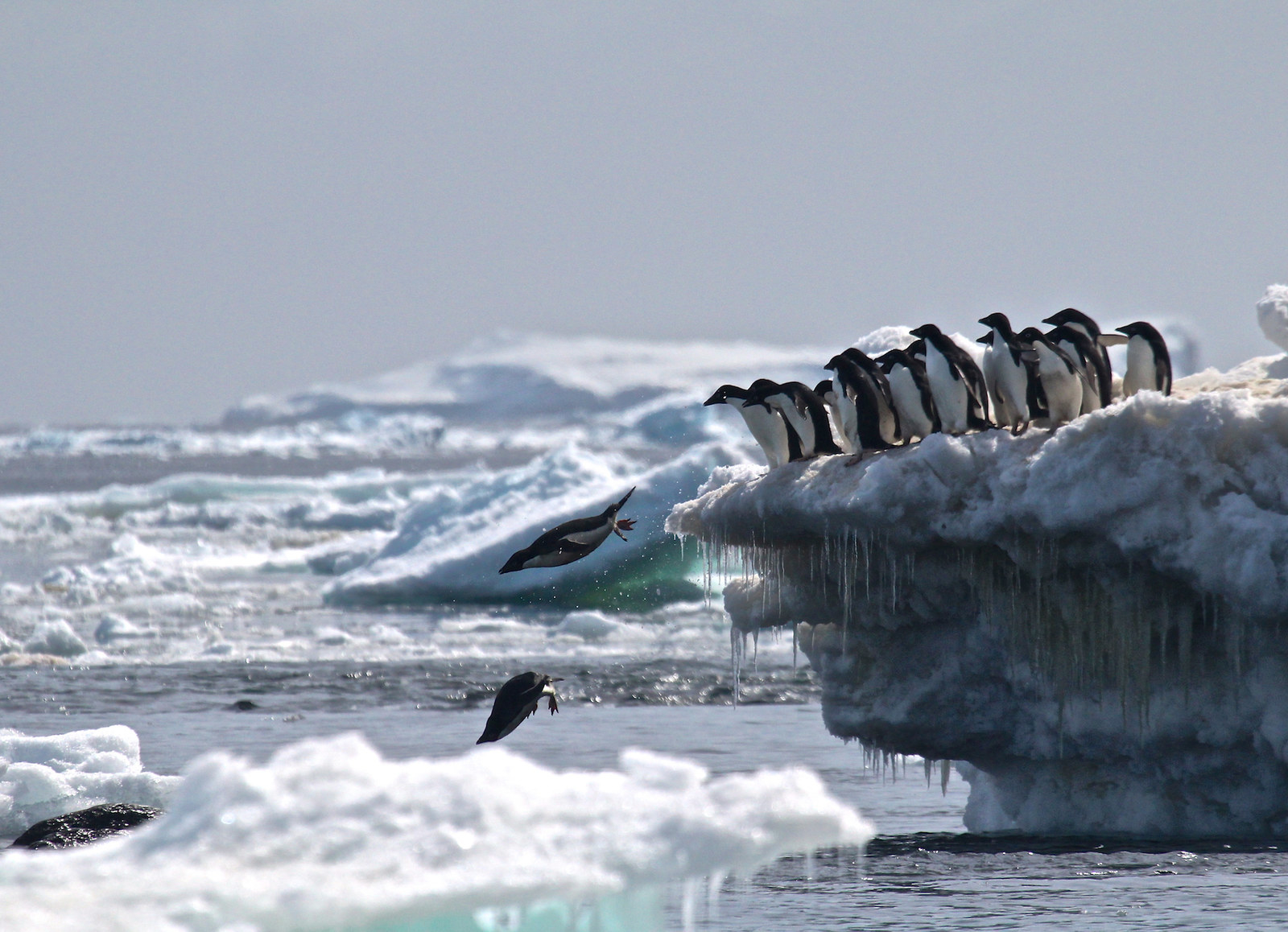
A scientific expedition to a remote part of Antarctica turned up a pleasant surprise: a secret hideout of more than 1.5 million penguins, whose populations have been declining due to climate change.
Scientists discovered this previously unknown “supercolony” of Adélie penguins on the Danger Islands, a set of remote, icy islands on the northeastern side of the Antarctic Peninsula, according to a study released Friday.
“Basically these islands were covered in penguins,” Michael Polito, an assistant professor of oceanography and coastal sciences at Louisiana State University and coauthor of the paper, told BuzzFeed News.
Adélie penguins only exist in Antarctica, and their populations have seen a marked decline along most of the western side of the peninsula, where rising temperatures tied to man-made climate change have melted sea ice. “But we didn’t know what was going on on the eastern side, because it’s a very icy place that’s hard to get to.”
Satellite images showing what looked to be large swaths of deep pink penguin poop (called “guano”) tipped scientists off that the region may be home to a previously unknown population of penguins.
“That was totally unexpected, and certainly at first I thought it might be a mistake, a false positive,” Heather Lynch, associate professor of ecology and evolution at Stony Brook University, and a coauthor of the study, told BuzzFeed News.
In December 2015 a team of 10 scientists made the treacherous journey to the Danger Islands, on the edge of the Weddell Sea’s oceanic vortex of sea ice. When they got there, Polito said, they discovered even more penguins than they'd expected.

The group counted 751,527 nests in all, helped by the satellite images and drones that zig-zagged to take thousands of pictures from above. That translates to about 1.5 million Adélie penguins, or roughly 20% of the total population of penguins in Antarctica.
“Discovering these colonies is pretty huge,” Lynch said. It’s probably the last major population of penguins that we didn’t know were there in the first place.”
The discovery cements the idea that climate change was behind the decline of penguin populations on the western side of the peninsula, Polito said. On the eastern side, where sea ice has been more stable, the species has clearly thrived.
“Not only are there a lot of penguins at this location, but these populations may have been stable at the same time that the populations on the western side have been declining,” Polito said.

The study has further implications for conservation, as it suggests that the small cluster of islands could serve as a valuable refuge for the penguin species in the region.
“I think the biggest question this study asks is, how could 1.5 million penguins be hiding in plain sight?” said Hanumant Singh, a Northeastern University professor who oversaw the robotics and imaging portions of the study.
“It really points to the fact that we really haven’t explored our world well enough,” Singh added. “I hope in two to five years we count the same number or more.”
